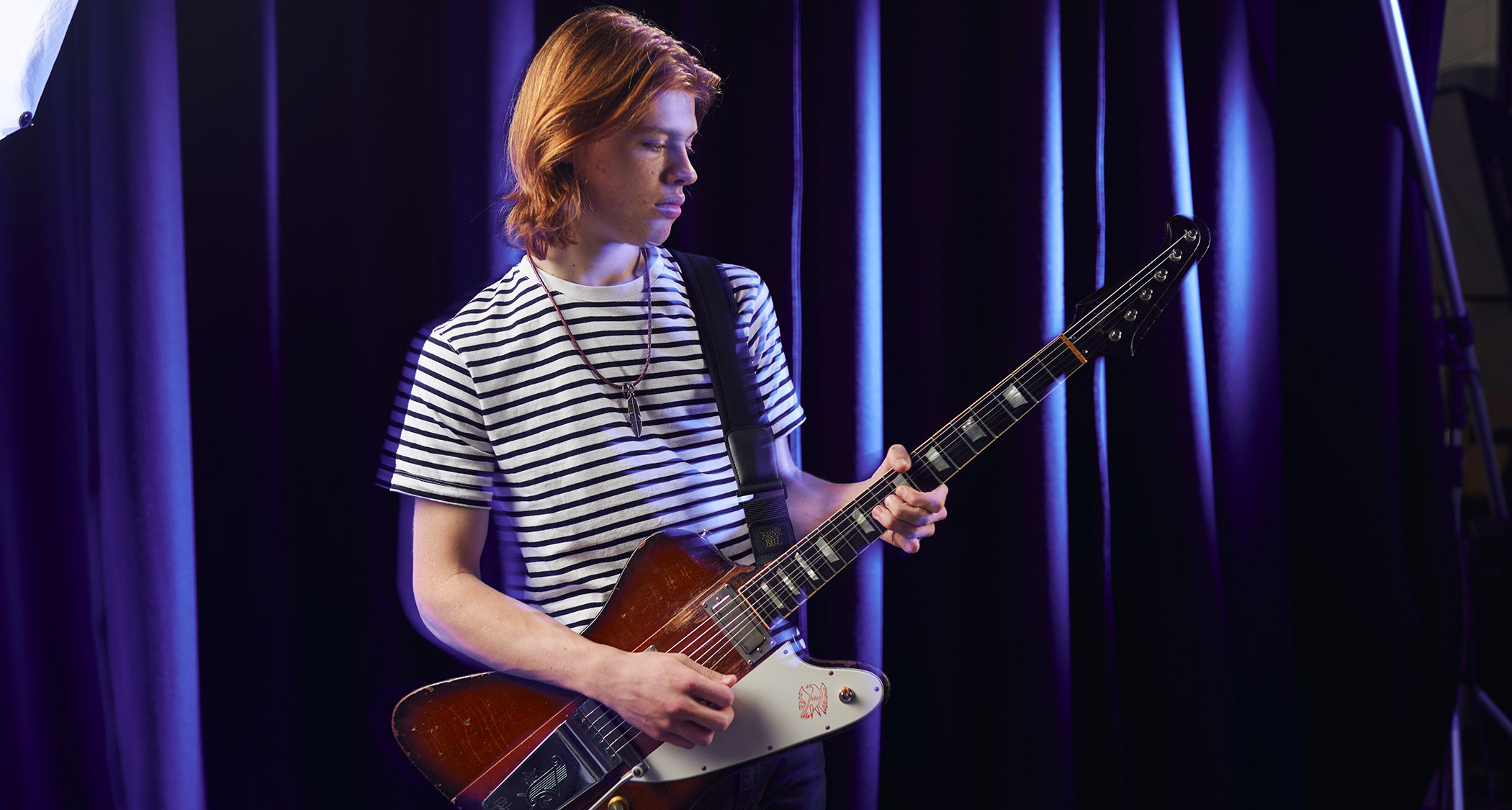“Alex’s note choices, use of scales and arpeggios, and classy vibrato was a perfect recipe for his metal guitar legend status”: What makes Testament’s Alex Skolnick one of thrash’s most cerebral players
Mixing alternate picking with smooth legato runs, book-smart theory with the instincts of a berserker, Skolnick took Testament to a new level

Born in Berkeley California in 1968, Alex Skolnick was a key player in the Bay Area thrash metal scene alongside bands like Exodus and Metallica. Alex originally joined a band named Legacy, but they soon after changed the name to Testament, reserving The Legacy as their 1984 debut album title.
Alex’s lead guitar playing style was always seen as more cerebral than his thrash contemporaries. His note choices, use of scales and arpeggios, harmonics and classy vibrato was a perfect recipe for his metal guitar legend status.
Our first example looks at how Alex might navigate the neck using legato. The concept here is to take one octave of a seven-note scale and play it across two strings. Play four notes on the lower string and three on the higher one.
For the four-note fragment, use your first finger to shift between the first two notes, then use the remaining digits to hammer-on within the scale position before moving up a string for the three-note fragment.
This is a repeatable shape, so once you can play the notes in this octave, you can transfer them across the strings. This allows the hand to ascend the fretboard smoothly and quickly. Keep your fingers relaxed and as close to the strings as possible, in order to build up speed and maintain control.
Examples 2 and 3 deal with alternate picking, a technique at which Alex is extremely adept. Alternate picking in metal often requires a lighter touch than you’d expect from such an aggressive form. For clean articulation and good string-to-string motion, use just the tip of the guitar pick to glide across one string to the next.
Angle the pick so the edge strikes the string rather than the flat part for a more crisp attack, but always experiment with the exact pick angle until you are happy with the tone you are creating.
For a controlled picking motion hold the pick with your thumb and first finger and move your hand from the wrist in small rotational motions; this allows the pick to progress in an arc so its tip can traverse the strings cleanly.
Alex makes great use of all the various harmonics types, including natural, pinched, and tapped harmonics. Example 1 features a cool cluster of natural harmonics which are played with a light touch of the fretting-hand fingers over the fretwire. As soon as you pick the string, lift off your fretting finger from the node point to produce the harmonic.
Examples 2 and 5 finish with pinched harmonics which are fretted as normal, but this time the side of your picking thumb momentarily touches the string as part of the downstroke motion. The resulting harmonic pitch will vary depending on the exact point of the string you are picking, but the sometimes random nature of this is what makes it so appealing.
Example 4 features a tapped harmonic, in which your picking hand’s tapping finger quickly strikes the string against the fretwire exactly 12 frets higher than the fretted note. Play each example slowly, focusing on accuracy, timing and economy of motion before gradually increasing the tempo until you can comfortably play up to speed.
Get the tone
Amp Settings: Gain 7, Bass 3, Middle 6, Treble 7, Reverb 1
Alex uses his ESP signature guitar with Seymour Duncan JB and 59 humbucking pickups. The classic Testament tone is a boosted Marshall. A boost pedal such as a Tube Screamer tightens the low end for more focused riffing, plus it provide extra saturation and sustain for lead playing. You could also add a stereo delay pedal to help the notes blend together.
Example 1
Start this F# Aeolian lick (F#-G#-A-B-C#-D-E) with some first-finger vibrato, then shift up to the 4th-fret legato passage.
Repeat this opening phrase in octaves on each pair of strings, then finish with ringing natural harmonics at the 5th and 7th frets respectively, adding some subtle vibrato with your whammy bar.
Example 2
This lick is based in A Phrygian mode (A-Bb-C-D-E-F-G) and begins with an alternate-picked sequence of four through the scale, phrased using a triplet feel.
For bar 2, use legato to ascend the strings before finishing with a sweep-picked A minor arpeggio. Play the final note as a pinched harmonic.
Example 3
Use pull-offs and alternate picking to play this C harmonic minor (C-D-Eb-F-G-Ab-B) based lick. Bring the lick to life by palm muting the picked notes and lifting the palm mute off for the pull-off, in order to give those notes more emphasis.
Example 4
This lick is in A Dorian with an added b5 note to give it a bluesy flavour (A-B-C-D-Eb-E-F#-G). Repeat each six-note pattern slowly in isolation before linking them together for the full lick.
Finish by using your picking-hand’s tapping finger to touch the string over the 17th fret to produce the harmonic.
Example 5
This lick makes use of F# diminished scale (F#-G#-A-B-C-D-Eb-E#). The first bar is based in the diminished arpeggio shape with minor 3rd spacings between the notes. Starting in bar 2, we have a series of descending whole-tone pull-offs followed by a final pinched harmonic.
Get The Pick Newsletter
All the latest guitar news, interviews, lessons, reviews, deals and more, direct to your inbox!
Charlie Griffiths plays guitar in acclaimed prog-metal outfit Haken, and has a wealth of experience handling corporate and session gigs for genres as diverse as rock, heavy metal and pop. He has been a regular contributor to Total Guitar, Guitar Techniques, and Guitar World for over a decade, and released his debut solo album Tiktaalika in 2022.
“He combined the passion of Gary Moore with riffs inspired by Zeppelin and Deep Purple, plus unexpected melodic twists like Ritchie Blackmore”: He was one of ’80s rock’s great journeymen – and his searing hot lead work inspired Marty Friedman
“There are so many sounds to be discovered when you get away from using a pick”: Jared James Nichols shows you how to add “snap, crackle and pop” to your playing with banjo rolls and string snaps












